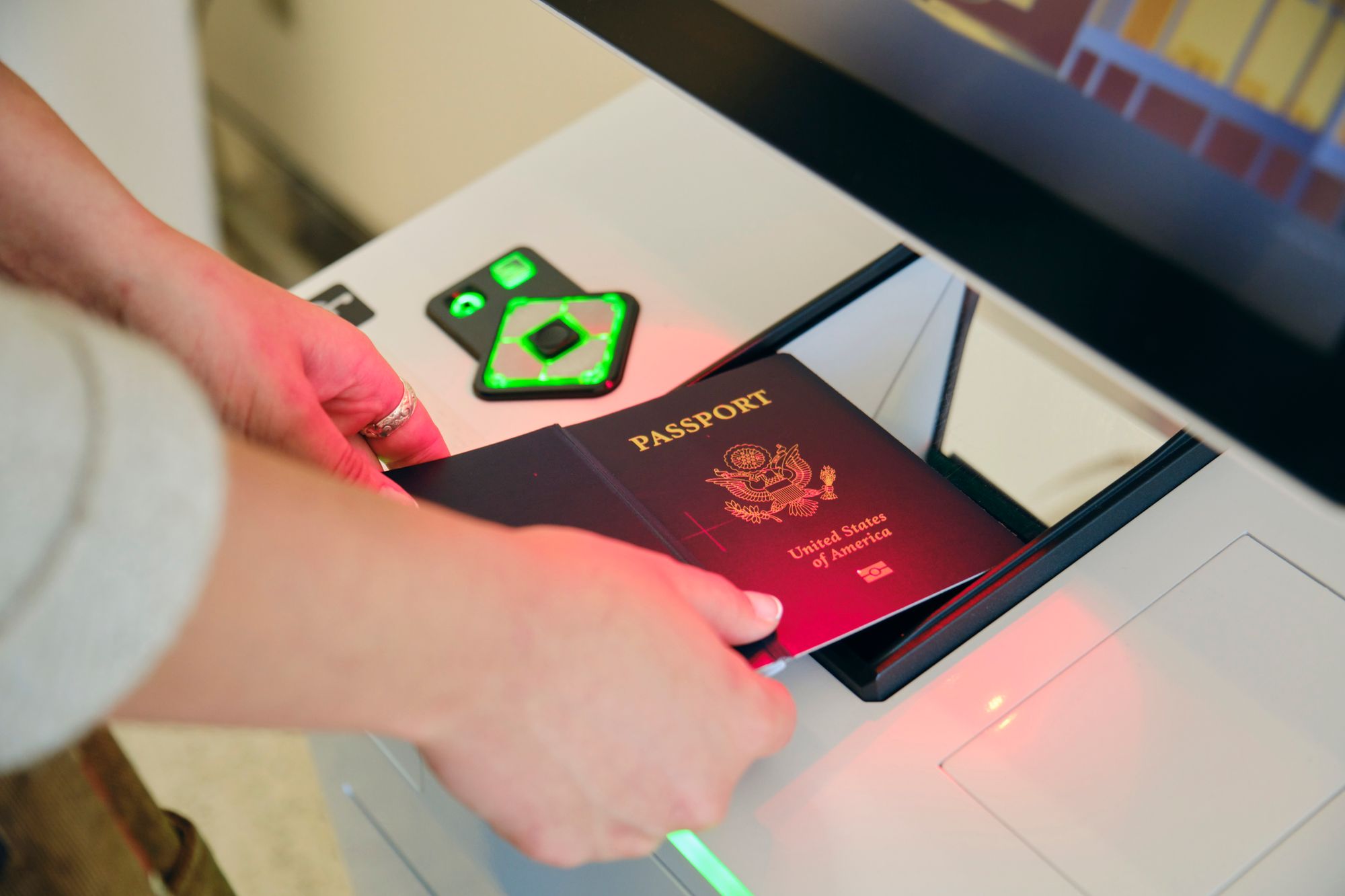The European Union is set to launch its Entry/Exit System (EES) on 12 October 2025. This means minor changes are soon coming for non-EU travellers visiting the Schengen area, which includes all EU nations (except Ireland and Cyprus), as well as Iceland, Norway and Switzerland.
In short, the system will involve biometric registration (like fingerprints and/or a facial scan) the first time you visit the Schengen area after 12 October, meaning travel around this time may take a little longer. In the long term, it’s hoped that the system will actually speed things up.
Crucially, the EES does not require you do to anything, or fill out any forms, in advance of actually travelling.
While the EES launches on 12 October 2025, full implementation of the system won't be in place until 10 April 2026. In the six months between those dates, your passport will be stamped, and you may or may not go through an EES kiosk.

The changes will impact most non-EU visitors, including those from the United Kingdom, United States of America, Canada and Australia, but crucially, the EES does not require you do to anything, or fill out any forms, in advance of actually travelling to Europe. It will only impact your in-person border experience.
Down the line, the EES system will work in conjunction with the EU's visa waiver scheme (the European Travel Information and Authorisation System, or ETIAS) - which will launch in October 2026, and which will require most non-EU visitors to apply for a visa waiver before visiting the European Union.
Here is a quick breakdown of what we know for now:
What is the EU’s new Entry/Exit System (EES)?
The EES is a new automated system which will be used to track border crossings in and out of the Schengen area by visitors from non-member countries, removing the need for passport stamps.
Currently, eligible non-EU citizens, including those from the UK, US, Canada and Australia, are currently allowed to spend 90 days in any 180-day period in the Schengen area without a visa. One role of the EES will be to keep track of any given traveller’s movement online to ensure that they do not breach this limit.
When and where is the EES coming into action?
The EES will be used in 25 of the 27 EU nations, as well as in Iceland, Norway, Liechtenstein and Switzerland. The EES will not be used in Ireland or Cyprus. In both of these countries, manual checks will remain in place.
The system will be rolled out from 12 October, with full implementation of the system to be in place by 10 April 2026. This means that between 12 October 2025 and 10 April 2026, you might go through an EES gate or you might not - but either way, you will still have your passport checked and stamped.

From 10 April 2026, passport stamps will cease and everything will be digital.
It is not currently known which airports and countries will launch the EES first.
How will this change my travel experience?
The EES means that when most non-EU visitors enter any of the 29 countries where the EES will be in operation for the first time after October 12, they will need to register their passport details and biometric data.
For most people, this will happen at the airport on your arrival in the relevant Schengen country. There are some exceptions to this, however. For example, in the UK, if you are taking a ferry or train to Europe, the check may happen before departure - for example at Dover Ferry Port or London St Pancras station.
The registration process will involve being asked for four fingerprints, as well as facial biometrics.
On subsequent visits to the EU, visitor information will then be checked on entry and exit against this data - involving at least one biometric scan - and visitors may be asked questions about their trip. These could include questions about:
- Where you will be staying on your trip
- Whether or not you have enough money for your travels
- Questions about your medical insurance
- Confirmation that you have a return ticket (or if not, what your plans are)
Of course, this sort of questioning is already not uncommon at border control.
It should be noted that this system does not replace the Schengen visa. If you are from a country that requires a Schengen visa to visit Europe, like India, for example, you must still obtain that visa before travelling.
Will this lead to delays?
While it may take longer to get through a border control while people register for the EES for the first time (something the phased roll-out of the system will hopefully mitigate), the stated aim of the EU is that it will make entry and exit from EU countries faster, not slower, in the long run.

Do I need to do anything in advance?
The ESS does not require you to fill anything out in advance of travel, unlike the upcoming ETIAS EU visa waiver, which you will have to apply for in advance of travel from late 2026 onwards. Some more details on that below.
So, what is ETIAS - the EU Visa Waiver?
Similar to the ESTA required to visit America or the ETA required to visit Britain or Canada, the European Travel Information and Authorisation System (ETIAS) will require non-EU nationals to fill out an online visa waiver form before visiting the EU. You’ll have to provide personal details and pay 20 euros (£17/$20) for the waiver. Each visa waiver will last three years or until passport expiry, and you’ll need to apply for the ETIAS at least three days before travelling.
The ETIAS system is not set to come into effect until later - in October of 2026.
Check out our full range of adventure holidays in Europe now!


